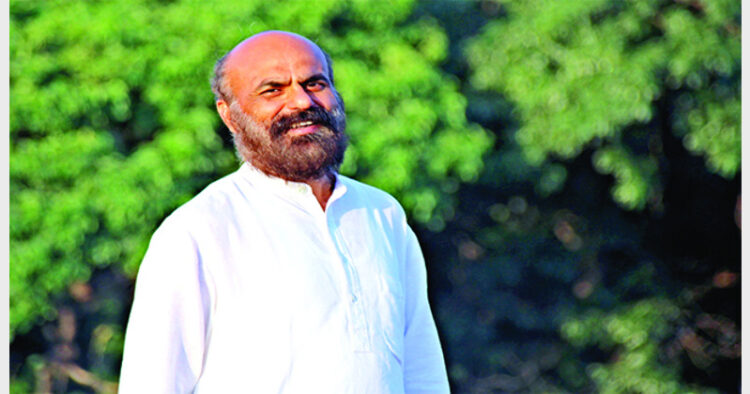We all agree that life is invaluable, don’t we? One’s life is dear to everyone, isn’t it? But how many of us are really awake to those attributes (vibhuti) which make this life invaluable and dear?
And, even when some among us somehow become aware of that which makes life invaluable and dear, how many even then, among those ones, live in that awareness incessantly? Not many really do.
We don’t do that because the ones who become awake to the attributes that make life invaluable don’t receive said awareness through mainstream global education systems but through some other source.
Our global mainstream education system doesn’t impart those values in the right order of priorities which make life invaluable. And, we are, who we are, more or less what our education makes us. Simply put, those among us who receive supreme meaning in life it doesn’t come through the mainstream education system but from other sources of learning (realising). This difference of source creates identity tussle in our behavior as our way of living subtly gets oriented according to the order of values perceived by us in terms of our fulfillment. And, as mentioned, when supreme meaning in life comes from another source instead of its coming from mainstream education then, attraction towards other sources and higher values becomes quite natural. This creates value conflict and identity tussle in individuals and the world. Is this what we should have for shaping up well rounded, fully blossomed personalities? Or, it is a trap to create lop sided personalities, if not outrightly split ones!
So, if it is not ‘this education’ then what is that which makes life invaluable or most valuable especially, human life?
In order to seek the answer of this question, it would be apt and pertinent to have a look at the Indic knowledge traditions. Because, Indic spiritual tradition is seen as eternal in living guru disciple order (sanaatan-guru-shishya-parampara-kram). It is originally synonymous with eternity (sanaatan). No other tradition identifies itself with sanaatan ‘first’. Therefore, chances of discovering the real values in their correct order are best here as compared to other traditions which originated in Time, at some point in time to be precise. Moreover, it makes sense even when we look at it materially and ‘historically’ as well. As, Vedic Sanskrit-literature is the ancient most literature discovered by humanity.
When supreme meaning in life comes from another source instead of its coming from mainstream education then, attraction towards other sources and higher values becomes quite natural
The word for value in Vedic Sanskrit is mulya. Mulya means that which is connected to root or coming from root (mul). Root is that point from which life begins. By leaving an inanimate state behind, ‘life’ evolves to animate form. Visibly this process of change from inanimate to animate is continuous at the level of root as minerals are continuously transforming and consumed through activities of root. And, it is reasonable to say that life becomes ‘life’ only when it comes to animation. Before that its constituents stay in elemental and mineral forms. And, neither in elemental form nor in their mineral form these are termed as living/animate. That’s how it is factual to call life most valuable (muly-vaan). But, life’s value begins from this point; it doesn’t end at it. It becomes invaluable (amulya/anmol) only when it completes the journey and attains its ultimate goal. This journey of life beginning from mulyvaanataa (valuableness) to Amulyataa (invaluableness) must be emphasised and made part of school curriculum across the globe.
Indic (Vedic) knowledge is indicated as Apaurusheya (i.e. beyond the Creative power of purusha). Purush is the name in Sanskrit which is given to the aatmaa (soul) when its attributes are realised in any human frame to the extent of knowing itself as the master/knower of the field/body (kshetra) but not beyond. Every higher stage of spiritual realisation is known by a certain name which indicates the attribute of that particular stage of realisation. For example, if Purush in a human frame attains to higher spiritual states and attributes then it is known as Eishwar (Purush vishesh ishwarah). There are higher stages to be realised and attributes are attained accordingly. But that is not the main topic for this piece (Upanishad). Main topic here is what makes life valuable and what makes it invaluable.














Comments